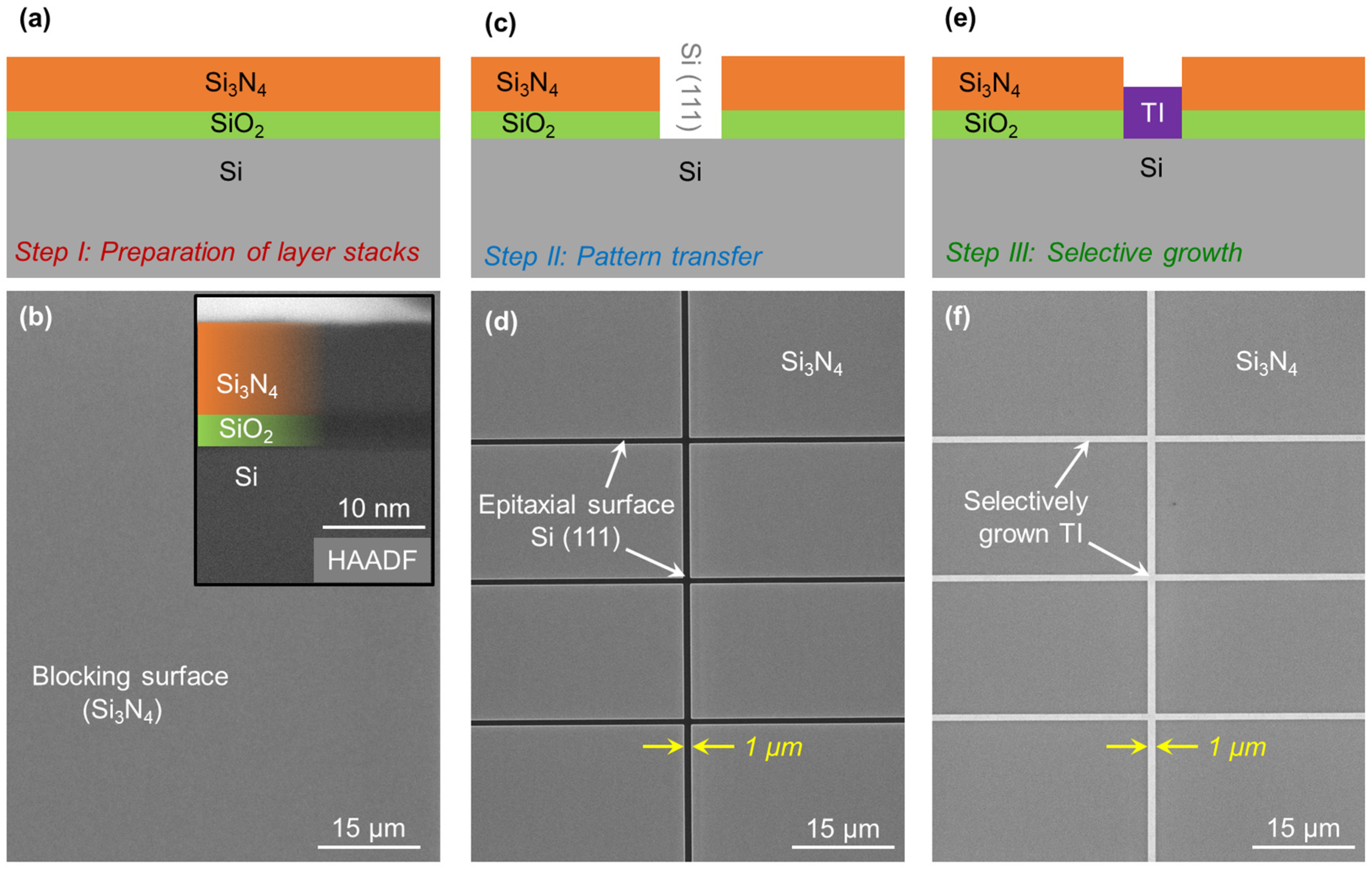Joint work of ML4Q members Mussler, Schüffelgen, Grützmacher, Schäpers and Mayer at Forschungszentrum Jülich was recently published in Nanomaterials. In the work, the authors introduce a platform that facilitates the realization of fully in vacuo quasi-1D nanostructures of three dimensional topological insulators (3D TIs). “It is a state-of-the-art study that provides pristine crystal quality of (Bi,Sb)2Te3 via selective area epitaxy”, says first author Abdur Rehman Jalil, postdoc in the group of Gregor Mussler. “It counters critical environmental and fabrication challenges associated with these crystals. Hopefully, this work will provide useful insight to various communities including quantum computation, scalable nano-engineering, topological superconductivity, quantum spintronics, low-power phase change materials and thermo-electronics.”

Illustration of major steps during Selective Area Epitaxy (SAE). The cross-sectional sketches include (a) the preparation of blocking surface on Si wafer (combinational layer stack of SiO2 and Si3N4), (c) pattern transfer and (e) the selective growth of TI on the exposed epitaxial surface. While (b,d,f) display the corresponding scanning electron micrographs (SEM) taken at the respective fabrication steps. The inset in (b) depicts the cross-section high angular-annular dark field (HAADF) image of the blocking layers acquired via scanning transmission electron microscopy (STEM). [Source: MDPI, Figure 1 of the publication]
Publication: A. R. Jalil, P. Schüffelgen, H. Valencia, M. Schleenvoigt, C. Ringkamp, G. Mussler, M. Luysberg, J. Mayer, and D. Grützmacher, Selective Area Epitaxy of Quasi-1-Dimensional Topological Nanostructures and Networks, Nanomaterials 13, 2: 354 (2023)
https://www.mdpi.com/2079-4991/13/2/354#